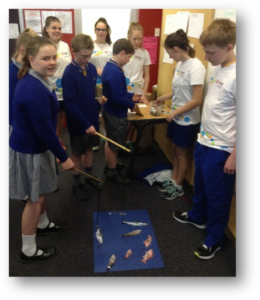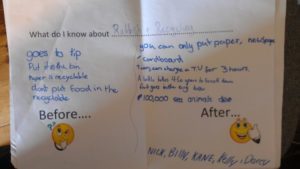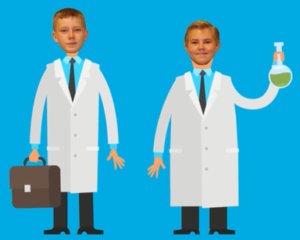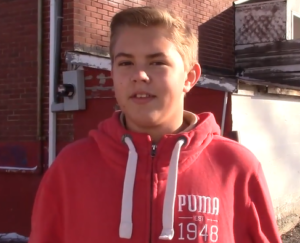2015 Saskatoon, Saskatchewan, Canada
Charlee and Kelsey from St. Edward School decided that the best way to improve their watershed was by educating and instilling environmental values in the younger generation! By educating and changing the behaviours of our children and youth and developing their relationship with our environment, long term positive environmental effects are achieved. They feel more connected to their watershed and the natural world, and so they want to work towards protecting it!
The students decided the best way to do this was by developing a colourful children’s book called “Sammy’s Flight over our Watershed.” They hand drew and developed a unique storyline that follows Sammy, a young squirrel, and Callie, his bird friend who explores their watershed and discovers that it 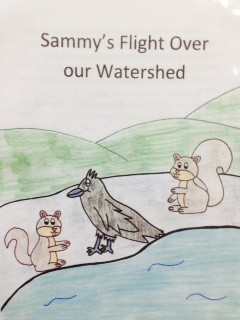 is being impacted by the careless actions of humans. The story teaches younger grades the importance of taking care of their watersheds. The book provides a number of activities the students can do to improve their watershed such as cleaning up litter, making sure their car is being washed at a car wash, responsibly using chemical fertilizers and herbicides or using alternatives, and not dumping paint or oils down the storm drain. Charlee and Kelsey read their story to a number of classes in their school and donated the book to their school library to be used as a teaching tool for school teachers in grade 1-3.
is being impacted by the careless actions of humans. The story teaches younger grades the importance of taking care of their watersheds. The book provides a number of activities the students can do to improve their watershed such as cleaning up litter, making sure their car is being washed at a car wash, responsibly using chemical fertilizers and herbicides or using alternatives, and not dumping paint or oils down the storm drain. Charlee and Kelsey read their story to a number of classes in their school and donated the book to their school library to be used as a teaching tool for school teachers in grade 1-3.
Education and awareness are the first steps to improving our local watershed. This books ensures that there are many future water protectors who have learned the importance of our watershed through Sammy’s little journey!
This book is a creative way to educate children on their watershed. It will be a great resource for teachers to use in the classroom because it covers curriculum outcomes, and parents can read it to their children at home. The children’s book was given to daycare centers and classroom teachers in their school division. The school division granted the Charlee and Kelsey permission to implement this project further if given the chance.
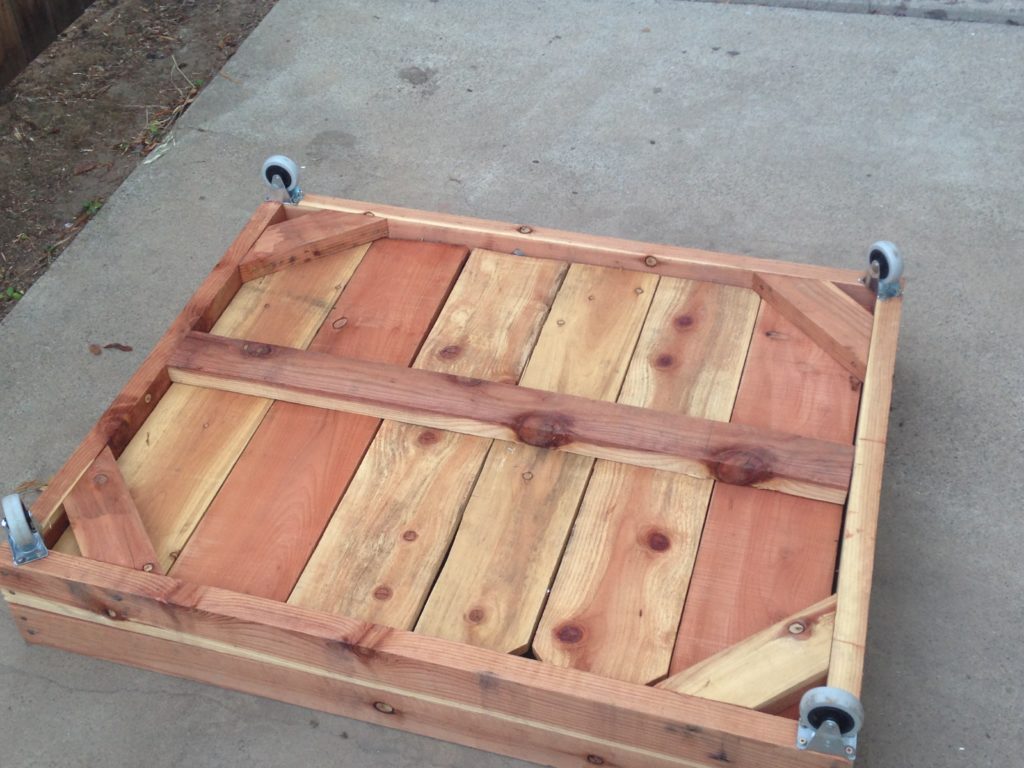
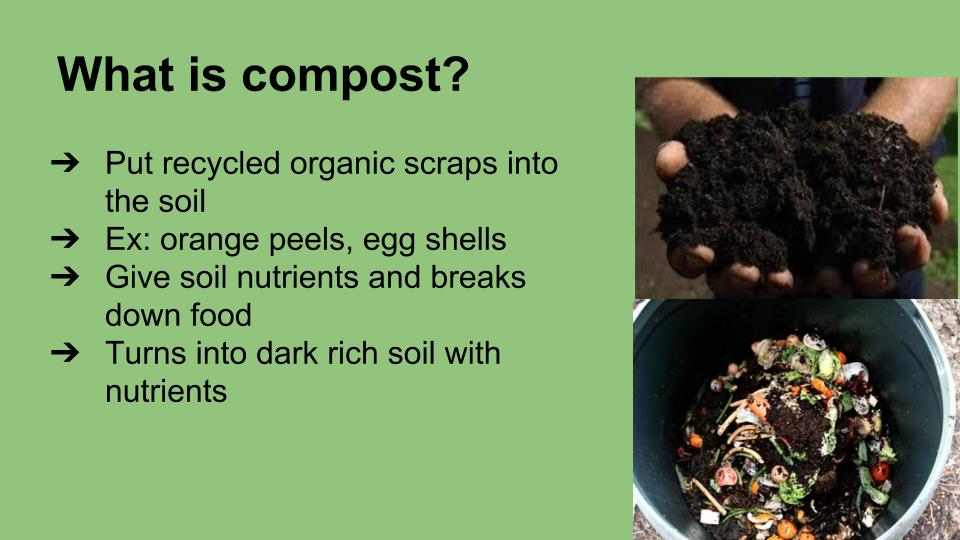 group then planned and delivered a lesson to freshman at school on the benefits of compost, utilizing their demo garden bed and preliminary results from their own experiment.
group then planned and delivered a lesson to freshman at school on the benefits of compost, utilizing their demo garden bed and preliminary results from their own experiment.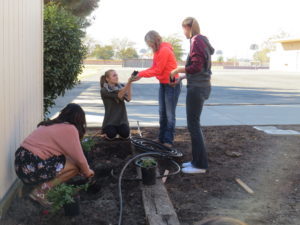

 is being impacted by the careless actions of humans. The story teaches younger grades the importance of taking care of their watersheds. The book provides a number of activities the students can do to improve their watershed such as cleaning up litter, making sure their car is being washed at a car wash, responsibly using chemical fertilizers and herbicides or using alternatives, and not dumping paint or oils down the storm drain. Charlee and Kelsey read their story to a number of classes in their school and donated the book to their school library to be used as a teaching tool for school teachers in grade 1-3.
is being impacted by the careless actions of humans. The story teaches younger grades the importance of taking care of their watersheds. The book provides a number of activities the students can do to improve their watershed such as cleaning up litter, making sure their car is being washed at a car wash, responsibly using chemical fertilizers and herbicides or using alternatives, and not dumping paint or oils down the storm drain. Charlee and Kelsey read their story to a number of classes in their school and donated the book to their school library to be used as a teaching tool for school teachers in grade 1-3.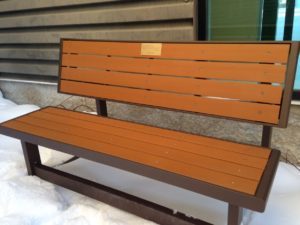
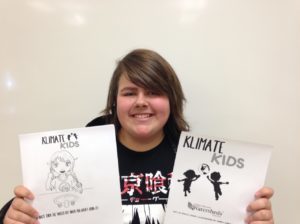
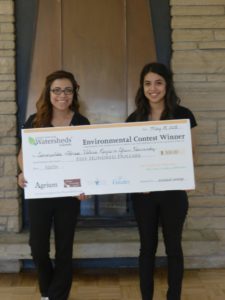
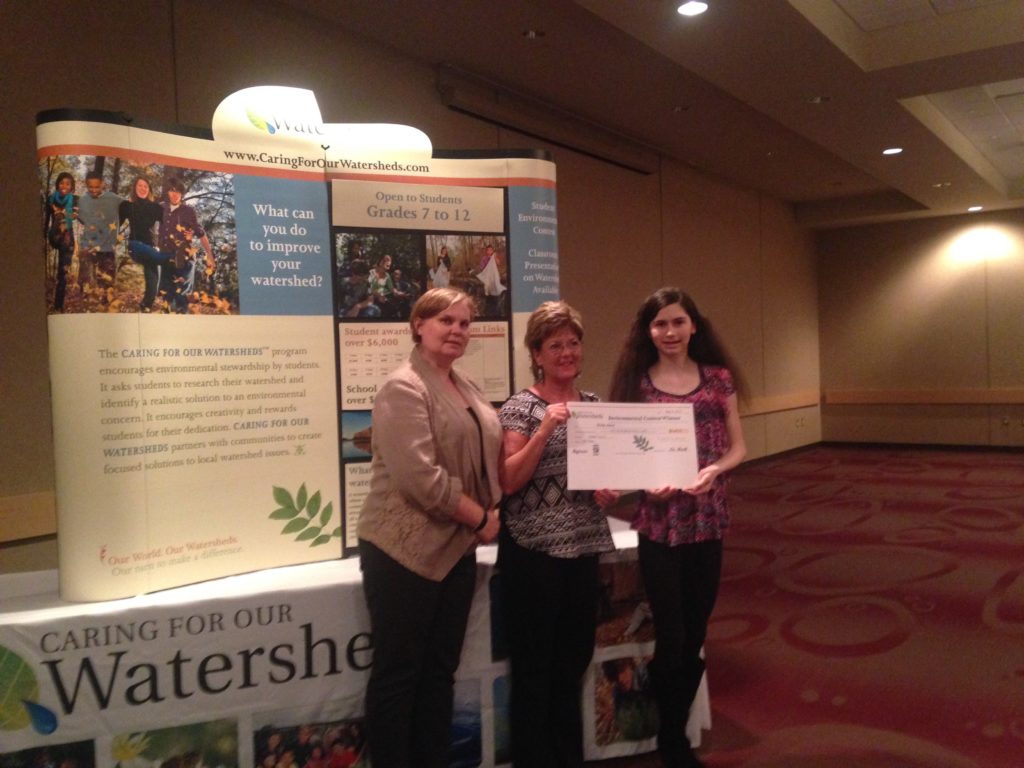 birds help new native shrubs grow and root in the riparian area providing wildlife habitat and other ecological services. The riparian area is the zone along river or creek banks close to the water. This zone needs strong and healthy shrubs to help keep pollutants out of our water ways. Plants in the riparian area slow down water and help it infiltrate and filter through soil and root systems before entering our watershed. This process reduces the amount of runoff entering our water ways and helps to prevent pesticides, fertilizers, and other pollutants from entering our watershed. As an added benefit, these shrubs and their root systems provide structure for the soil along river and creek banks which prevent erosion. Lastly, birds eat insects. The healthier our bird populations in our watershed the more insects they eat and the less pesticides we use to control them ourselves!
birds help new native shrubs grow and root in the riparian area providing wildlife habitat and other ecological services. The riparian area is the zone along river or creek banks close to the water. This zone needs strong and healthy shrubs to help keep pollutants out of our water ways. Plants in the riparian area slow down water and help it infiltrate and filter through soil and root systems before entering our watershed. This process reduces the amount of runoff entering our water ways and helps to prevent pesticides, fertilizers, and other pollutants from entering our watershed. As an added benefit, these shrubs and their root systems provide structure for the soil along river and creek banks which prevent erosion. Lastly, birds eat insects. The healthier our bird populations in our watershed the more insects they eat and the less pesticides we use to control them ourselves!